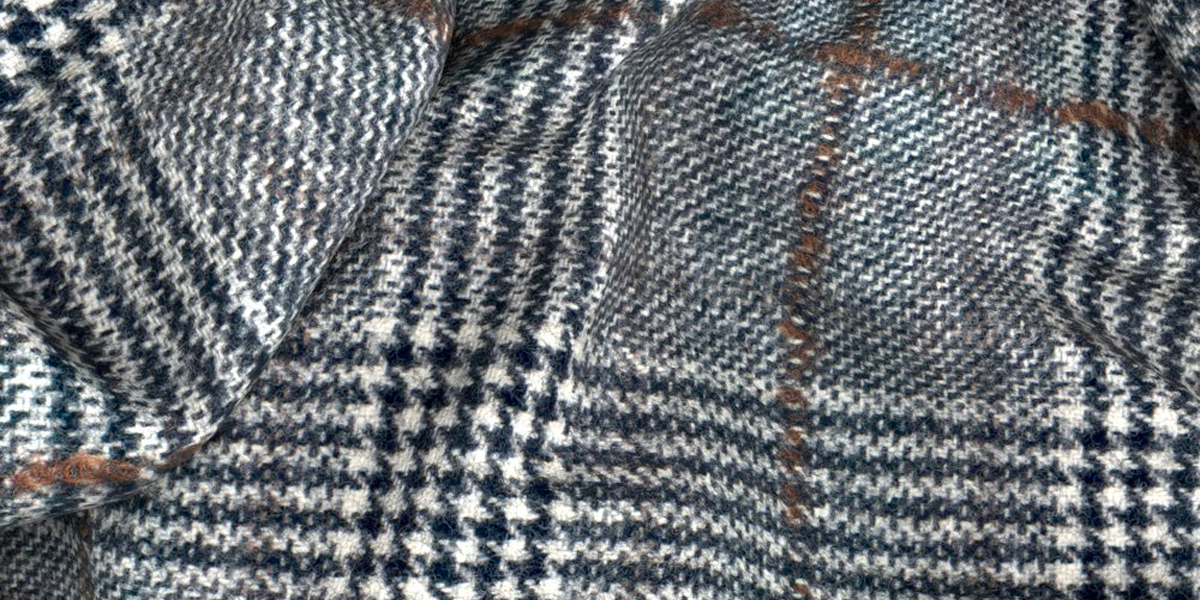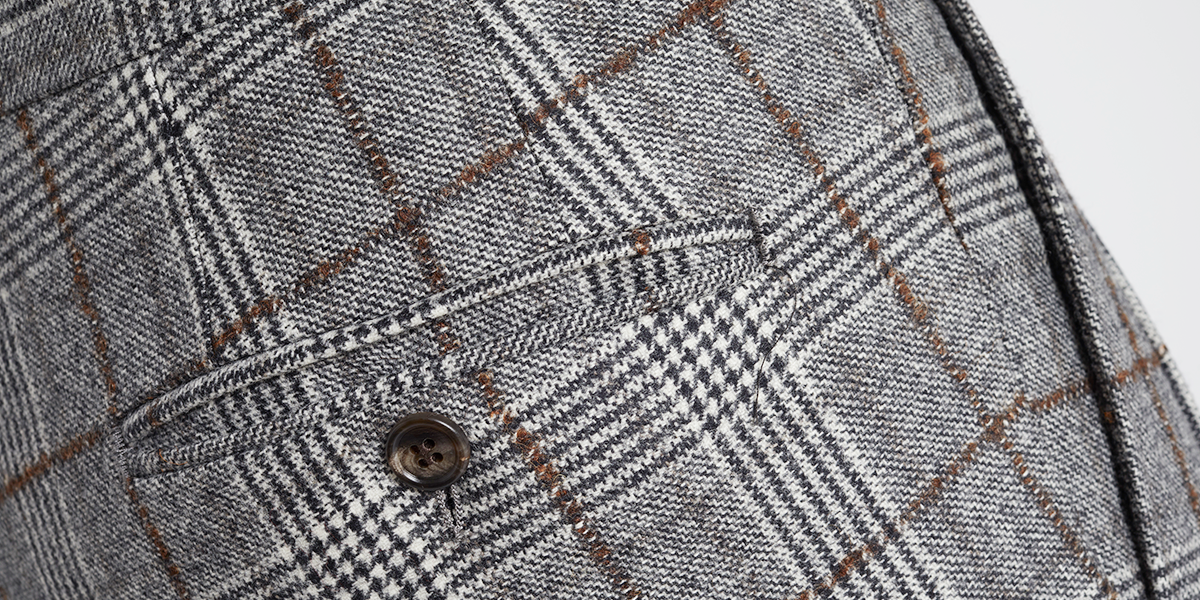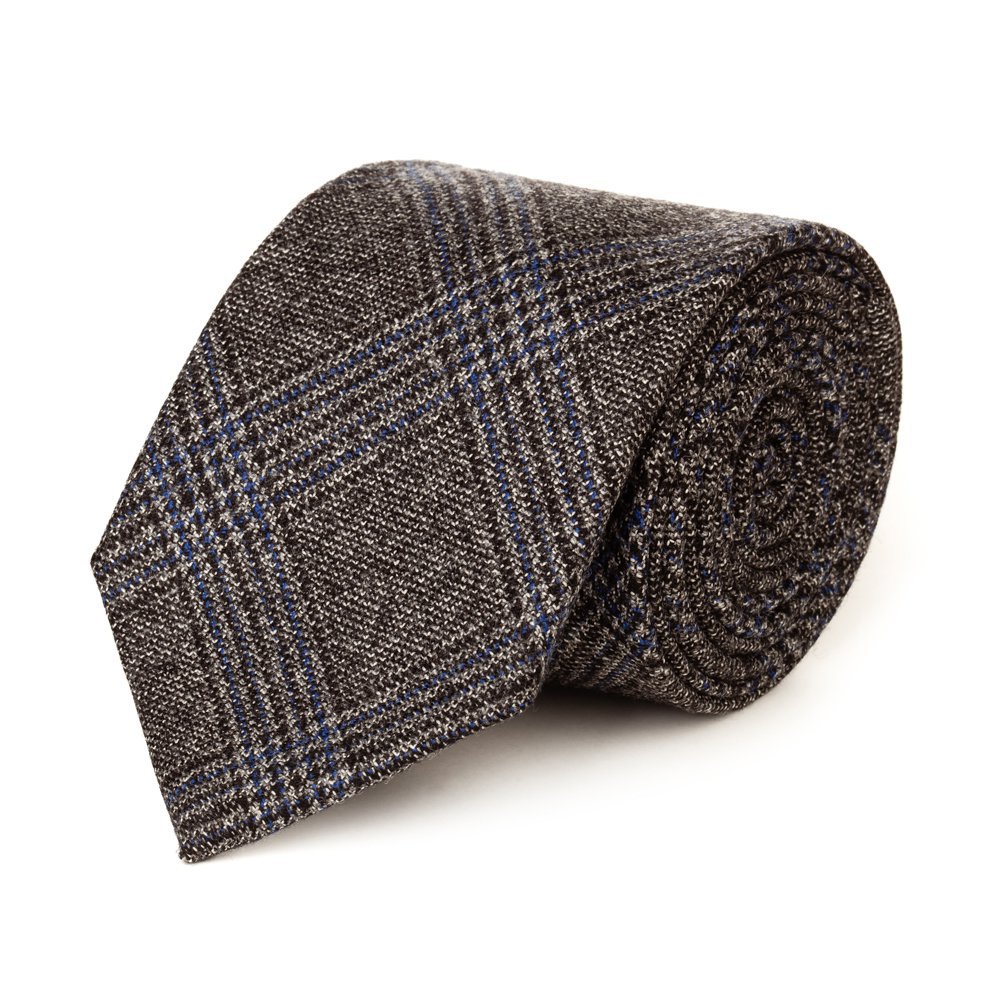When we look for the true meaning of the word Iconic, the dictionary says – “Figure or symbolic character of an era, a genre or an environment”. Well, if we were to list the most important icons of the male wardrobe, which for some reason or another have marked the fashion world, we’d mention the most iconic of all time: the Prince of Wales fabric.
An exclusive textile design with characteristic square patterns, that comes in numerous variations of tones and colours. The ideal fabric for the construction of sporty and elegant jackets to wear both in autumn/winter and spring. The gentleman of British elegance, which has repeatedly confirmed its key role in formal collections.
Where is this legend born and why did it become a part of the menswear wardrobe rituals? Here’s everything you need to know about the origins and history of the Prince of Wales fabric.
History of the Prince of Wales fabric
Great stories, those that come from very far, are often the most compelling ones, the most fascinating and even the most complicated to understand. This is also the case here. In fact, if we want to know the origin of the Prince of Wales fabric we must go back in time, until 1800.
Among all theories (and legends), the most trusted one narrates that the origin of this fabric dates back to the beginning of the nineteenth century, when a group of English landowners decided to emigrate to Scotland.
Not being able to wear the designs of the local clans (George IV asked members of the clans to dress in “different colours and patterns” when attending the hearings), the new immigrants adopted a distinctive emblem for dressing in a certain type of plaid pattern, known as “glenurqhart plaid”, name of a valley in Inverness Shire.
Over time this design became part of the British textile vocabulary with the name of glen plaid (also called glen check) and from the time of Edward VII is used for the suits of the heirs to the English throne, from which it took the name the Prince of Galles fabric.
Known as “Bertie”, Edward VII retains the title of “Prince of Wales” longer than any of his predecessors, and probably he should get the credit of getting Prince of Wales suit recognised as a must have for the male wardrobe.
However, it is only at the beginning of the 20th century that this ancient woollen fabric reaches the peak of popularity. It is then that Edward Albert (1894-1972), Prince of Wales from 1910 until 1936, approve it as a key pattern for his tailored suits.
As master of style, the Duke of Windsor launched many fashions: suede shoes, zuava trousers, sportswear. But first of all came the Prince of Wales suit, which from then on becomes a true style icon.
A pattern reserved for nobles only? Not at all. Throughout the 1900s, various versions of the Prince of Wales fabric were worn by British film stars (see the various James Bond by Connery and the Red Carpet appearances by Eddie Redmayne), and more. And the fabric has even become a favourite of designers such as Ralph Lauren and Michael Bastian, each charmingly blending their American sensibilities with the pattern’s European allure.
Prince of Wales fabric features
The Prince of Wales is a particular pattern of woollen fabrics, characterised by a motif with large squares with alternate patterns of smaller squares and Pied-de-poule. The panels can be “solid” or decorated with coloured threads, which determine the design and liven up the appearance and style.
To know the characteristics of the Prince of Wales fabric we rely on the Dictionary of terms of fashion, which explains that “the squares are formed by a part of pied-de-poule or “star effect “, in a chain or a very thick two-tone weave with infinite variations, in more or less large ratio, with different weaves.
In the classic variants, the square part with pied-de-poule is about 2/5 of the total pattern, while the other 3/5, which forms the background mirror, are occupied by the millerighe or grisaglia (sharkskin) effect. In the other variants these measures might vary in ratio”.
The must-have of Prince of Wales is white/black but can be reduced in other colours like brown. A particularly sporty but elegant pattern, applied in many versions to both combed and carded fabrics, light or heavy, depending on the season.
How to wear the Prince of Wales fabric
The Prince of Wales is a particularly versatile fabric and as we have said it represents thousands of possible versions. It can be used both for jackets and for suits, but in order to wear it in the right way, it is necessary to take some aspects into consideration.
Here are some tips on when to choose it, how to wear it or how to combine it.
Prince of Wales suit
Whether it’s the wardrobe for the office or the leisure one, a suit made with this fabric is always a good choice. A garment that pays tribute to the highest English tailoring tradition, can be worn as a simple suit or combined with a tone-on-tone waistcoat, for a three-piece suit.
Prince of Wales Jacket and Blazer
Jacket or blazer? The choice is yours. What you get is a separate piece to wear with a pair of dark trousers (or chinos) for an informal dinner, or a “casual Friday” in the office.
Prince of Wales trousers
If for the Prince of Wales jacket it is easy to choose what to match, the spontaneous version is broken with trousers, for which we propose a casual combination made of sweaters or polo shirts in wool, exclusively in solid colour.
Prince of Wales shirt
Although it was born as a fancy suit, the glen check is a version also used for the making of business shirts for men. It is a good compromise for those looking for something different from the usual striped or solid colour shirts, but do not like the whimsical pattern. Can be worn with plain coloured suits or with tone-on-tone micro patterns.
Prince of Wales coat
The ideal geometry for the highlight of the fall/winter wardrobe. If you want a man’s coat that never goes out of fashion, the Prince of Wales has all it takes to keep you company for a long time.
Prince of Wales tie
In addition to the traditional regimental options, dots and paisley in silk, to complete the office look you also have the Prince of Wales design tie. To be combined with a plain-coloured shirt for a formal but distinctive alternative.
From season to season, the Prince of Wales is confirmed at the top of the charts of the most popular fabrics. The success was such that, while remaining an essential part of winter, it was also adopted for spring garments. I like it so much that for years it has crossed the male/female border, penetrating into prêt-à-porter.






